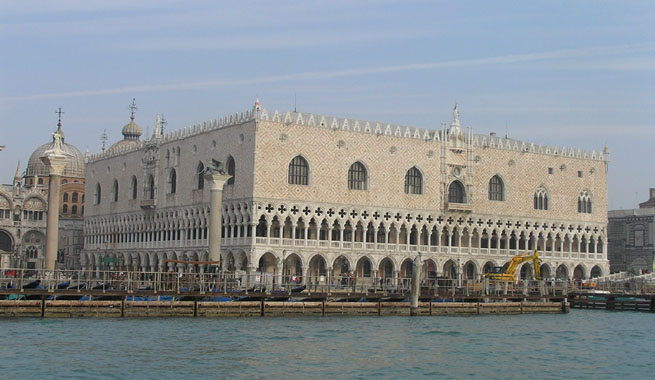
It is one of the most characteristic monuments of the city of canals. No one who has been to Venice escapes the mysterious charm of the Doge’s Palace. An exquisite sample of Gothic architecture from the 14th and 15th centuries.
Located next to Saint Mark’s Square, the Palazio Ducale , in Italian, is a gem worthy of admiration. It was the residence of the doges, seat of government and prison in Venice. If you decide to visit it inside, you will be captivated by its rooms decorated in the style of the time.
Masterpiece of Gothic architecture

Before being the palace we know today, it was an 11th century fortified castle that was destroyed in a fire. The current palace was built in the 14th and 15th centuries , and was innovative for the time, since the architects who designed it broke with the prevailing construction tradition by supporting the palace on stone arches.
The building, made of pink Veronese marble, has architectural elements of great beauty, such as the staircase of the Giants , in its interior patio, which was only used in ceremonial acts. It was the place where dukes were crowned. The main entrance to the palace was the Porta Della Carta , from the 15th century. From there starts a corridor that leads to the Foscarini arch , a triumphal arch that overlooks the courtyard.
The Bridge of Sighs

One of the elements of the Doge’s Palace that arouses the most interest in visitors is the Bridge of Sighs, perhaps the most famous in Venice and, surely, one of the most photographed. It was built in the 17th century and is in the Baroque style . It linked the Doge’s Palace with the jail of the Inquisition, above the Di Palazzo river. It owes its name to the sighs that the condemned made from the bridge when they saw the sky for the last time.
